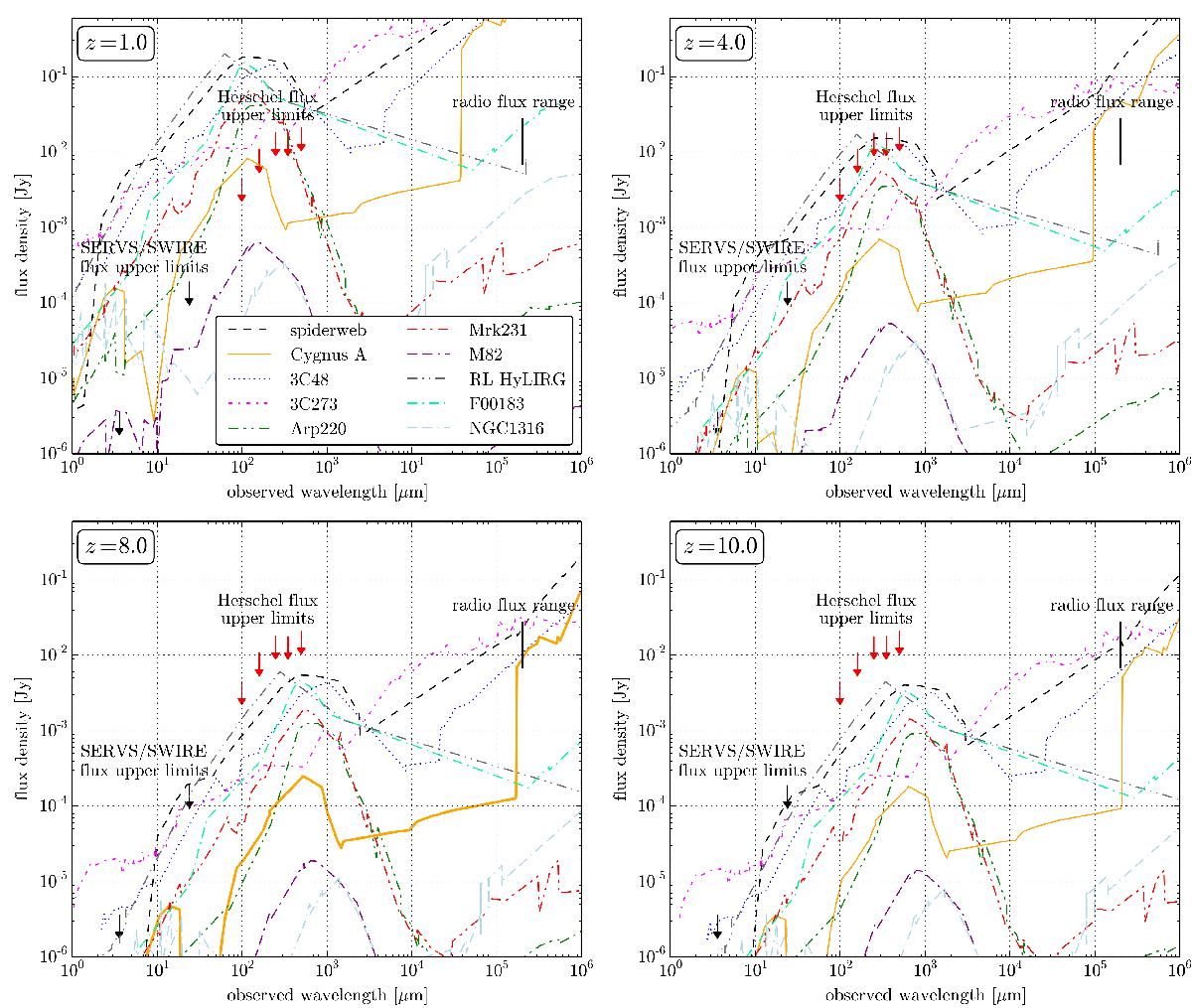Fig. 4

Broad-band SED modelling for IFRS, using the FIR flux density upper limits measured in this work (red arrows), SERVS/SWIRE near- and mid-IR flux density upper limits (black arrows), and the detections at 1.4 GHz (black bar). The template SEDs were shifted to redshifts between z = 1 and z = 12. Shown are the results at z = 1 (upper left subplot), z = 4 (upper right), z = 8 (lower left), and z = 10 (lower right), respectively. The legend shown in the upper left subplot is valid for all four subplots. At redshifts z ≲ 5, no template is in agreement with the photometric constraints of IFRS. However, if shifted to the redshift regime 5 ≲ z ≲ 8.5, Cygnus A (orange solid line) is in agreement with all constraints. The spiderweb galaxy (black dashed line) provides an appropriate template if shifted to very high redshifts z ≳ 10.5. The CSS source 3C 48 (blue dotted line) and the RL quasar 3C 273 (magenta dashed-dotted line) fulfil the constraint in the radio regime at redshifts 6 ≲ z ≲ 9 and 8 ≲ z ≲ 12, respectively, but disagree with the 3.6 μm flux density upper limits at these redshifts.
Current usage metrics show cumulative count of Article Views (full-text article views including HTML views, PDF and ePub downloads, according to the available data) and Abstracts Views on Vision4Press platform.
Data correspond to usage on the plateform after 2015. The current usage metrics is available 48-96 hours after online publication and is updated daily on week days.
Initial download of the metrics may take a while.






